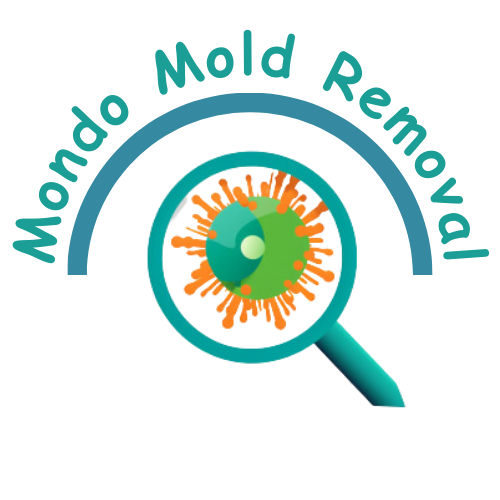You’ve probably heard about mold and its potential hazards, but do you truly understand the importance of testing for airborne mold? Mold is a common issue in many homes and workplaces, and it can have serious effects on your health. In this article, we will explore the significance of testing for airborne mold and how it can help you ensure a safe and healthy environment for you and your loved ones. Whether you’re a homeowner, a business owner, or simply concerned about your well-being, understanding the importance of testing for airborne mold is crucial.
Understanding the Importance of Testing for Airborne Mold
Airborne mold refers to the presence of mold spores in the air that we breathe. Mold spores are microscopic particles that can be released into the environment by mold growth on surfaces. These spores can easily become airborne and can be inhaled, leading to potential health risks.
What is airborne mold?
Airborne mold refers to the presence of mold spores in the air we breathe. Mold spores are tiny particles that are released into the environment when mold grows on surfaces such as walls, ceilings, or damp areas. These spores can become airborne and spread throughout a space, making them a common indoor air pollutant.
The potential health risks of airborne mold
Inhaling airborne mold spores can have serious health consequences. People who are exposed to high levels of mold spores may experience respiratory problems such as coughing, wheezing, and difficulty breathing. Some individuals may also develop allergies or asthma-like symptoms. Furthermore, long-term exposure to airborne mold can lead to more severe health issues, such as chronic lung diseases or even infections.

Identifying common sources of airborne mold
Mold thrives in damp and humid environments, so it can often be found in areas with water damage or excessive moisture. Common sources of airborne mold include leaky pipes, roofs, or basements, as well as areas affected by flooding or inadequate ventilation. Bathrooms, kitchens, and areas with poor airflow are also prone to mold growth. Identifying and addressing these sources is crucial to preventing and managing airborne mold contamination.
Why testing for airborne mold is essential
Testing for airborne mold is essential for several reasons. Firstly, it helps to determine if there is a mold problem in your indoor environment. Even if you cannot see or smell mold, testing can detect its presence and allow you to take appropriate action. Secondly, testing helps to identify the type of mold present, as different molds can have different health impacts. Lastly, testing allows you to assess the effectiveness of any remediation efforts and ensure that the air quality in your home or workplace is safe.

Different types of mold testing
There are various methods for testing for airborne mold. The most common types include air sampling, surface sampling, and bulk sampling. Air sampling involves collecting samples of the air to measure the concentration of mold spores present. Surface sampling involves swabbing or tape-lifting surfaces to collect mold particles that have settled. Bulk sampling involves collecting physical samples of material suspected to have mold growth, such as a piece of wall or carpet. Each type of testing has its advantages and disadvantages, and the choice of method often depends on the specific situation.
Professional vs. DIY mold testing
When it comes to mold testing, you have the option to hire a professional or conduct the testing yourself. Professional mold testing services have the advantage of trained technicians who have the expertise and specialized equipment to accurately assess mold contamination. They can provide detailed reports and recommendations based on the test results. However, professional testing can be more expensive. DIY mold testing kits are also available, which can be more cost-effective but may not provide the same level of accuracy as professional testing. It is important to weigh the pros and cons and choose the option that suits your needs and budget.
When and how often should you test for airborne mold?
The frequency of mold testing depends on various factors, including the location and condition of your property, your health concerns, and any previous mold issues. It is recommended to test for airborne mold if you notice any signs of mold growth or if you experience unexplained health issues that may be related to mold exposure. Additionally, it is advisable to conduct regular proactive testing in areas prone to mold, such as basements or rooms with high humidity. Consulting with a professional can help determine an appropriate testing schedule based on your specific circumstances.
How to prepare for mold testing
There are certain steps you can take to prepare for mold testing. First, ensure that the testing area is representative of the entire space you want to evaluate. This may involve selecting multiple sampling locations or testing during different conditions. Next, it is important to minimize activity in the area being tested to prevent disturbing settled mold spores. This includes refraining from cleaning or using fans that could potentially affect the test results. Finally, follow any specific instructions provided by the testing company or kit manufacturer to ensure accurate and reliable results.
Interpreting and understanding mold test results
Interpreting mold test results can be challenging as it requires understanding the terminology and comparing the findings to the recommended guidelines or acceptable levels. Results from mold testing typically include the types and concentrations of mold spores found in the samples. It is important to consult with a qualified professional, such as an industrial hygienist or mold remediation specialist, who can help interpret the results and provide appropriate recommendations for further action.
Taking action based on mold test findings
If mold testing reveals the presence of airborne mold, it is important to take action to address the issue promptly. The appropriate course of action will depend on the extent of contamination, the types of mold identified, and the associated health risks. In some cases, simple measures such as improving ventilation or addressing water leaks may be sufficient. However, more extensive mold growth may require professional remediation to ensure thorough removal and prevent future reoccurrences. Regular monitoring and maintenance should also be implemented to prevent the reemergence of airborne mold.
In conclusion, testing for airborne mold is crucial for maintaining a healthy indoor environment. By understanding the potential health risks of airborne mold, identifying common sources of mold growth, and knowing when and how to test for mold, you can take proactive steps to ensure the air you breathe is safe. Whether you choose professional or DIY testing, interpreting the results and taking appropriate action are essential for addressing mold contamination and safeguarding your wellbeing.






